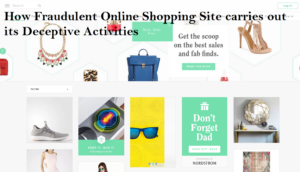The REI Yeti Tumbler Giveaway Scam: A Deceptive Offer
Receiving an email with exciting news of a free Yeti Rambler Tumbler from REI might seem like a fantastic surprise for loyal customers. The message promises that, by taking a short survey, you will receive the coveted tumbler at no cost. However, this deal is indeed too good to be true.
The email claims that you’ve been “chosen” to participate in a loyalty program survey, which involves answering a few simple questions in exchange for a free Yeti Rambler tumbler. Despite the enticing offer, it’s important not to be deceived by this fake promotion. This email is a scam designed to trick you into clicking on a link and completing a “survey” that requests your personal information.
Instead of rewarding you with the promised tumbler, clicking the survey link takes you down a path leading to a series of scam websites. These websites are set up to harvest your personal details without ever intending to send you the advertised freebie. The survey does not collect or tally your answers; it is merely a front to gather your personal information.
The scam email is crafted to look convincing, featuring several key details. It includes the REI logo and branding, making it appear as if it comes directly from the reputable outdoor retailer. Scammers often use legitimate company logos and designs to create a false sense of legitimacy. Additionally, the email includes an address in Hutto, Texas, along with a zip code, which gives the impression that the offer originates from an official source. However, don’t be fooled by these appearances.
Another convincing detail is the specific mention of the Yeti Rambler 20 oz model, a highly sought-after product. Including such a desirable item helps persuade readers that the offer is genuine. Furthermore, the email prompts recipients to “get started now” and claim the gift before it’s gone, creating a sense of urgency that encourages quick, unthinking clicks.
Once you click the email link, you are sent through a maze of dubious websites designed to disguise the scam’s true purpose. Initially, you might land on a blank page that claims the survey is “loading,” giving the impression of legitimacy before redirecting you elsewhere. Subsequently, you are bounced through various shady domains filled with typos, grammatical errors, misspellings, and other red flags of fraud. The more redirects involved, the harder it becomes to trace the scam back to its source.
This network of fraudulent sites works together to ensnare unsuspecting users. The promised freebie is just a bait to capture your personal details and sign you up for recurring charges without your consent. The scam’s design is clever, using REI’s trusted brand to lure loyal customers into a trap. By spoofing the company’s logo and graphics, the scammers create a false sense of legitimacy, disarming readers’ skepticism.
Make no mistake—REI has no association with these gift offers. Scammers are simply impersonating the retailer to lower your guard and entice you to click their links. The bait of a free Yeti Rambler is effective because REI shoppers find the item highly desirable. The allure of a $30 mug for free can override critical thinking, which is exactly what the scammers depend on.
Upon clicking through, you enter a funnel of dubious websites designed to obscure the original source. Hidden terms and conditions often enroll you in expensive monthly plans that are nearly impossible to cancel. Although the email and sites promise a “free” tumbler, the scammers behind this scheme have no intention of sending you anything. Their end goal is to collect your payment details and sign you up for costly monthly subscription plans without your informed consent.
The scam may initially charge a small $1 “verification” fee to get your credit card details. Soon after, you could see large recurring charges of $79 to $99 per month for unknown services you never agreed to or receive. Canceling these charges is very difficult, with some victims facing months of frustration and obstacles trying to stop the hidden billings.
In terms of email-based cyber threats, what are the different types of malicious emails?
Emails having Malicious Attachments
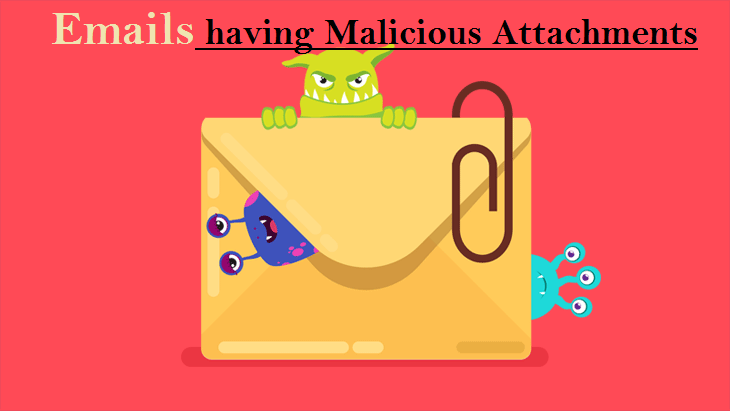
Email spam containing malicious attachments is a commonly employed method by cybercriminals to compromise users’ computers with malware. Malicious attachments often harbor trojans that possess the ability to pilfer sensitive data such as banking details, passwords, and other confidential information.
The primary objective of cybercriminals in these attacks is to deceive their potential victims into accessing a compromised email attachment. They commonly employ email messages that discuss recently obtained invoices, faxes, or voice messages to accomplish this aim.
If an unsuspecting individual succumbs to the trap and opens the attachment, their computer becomes infected, allowing cybercriminals to gather a substantial amount of confidential data.
Although it is a more intricate technique to pilfer personal data (as spam filters and antivirus programs typically identify such endeavors), if cybercriminals achieve success, they can access a broader spectrum of information and continue accumulating data over an extended duration.
Phishing Emails

Typically, cybercriminals employ deceitful emails to deceive individuals on the internet into divulging their confidential personal information, such as login credentials for diverse online platforms, email accounts, or online banking details.
These types of attacks are commonly known as phishing. In a phishing attack, cybercriminals typically send an email that mimics the branding of popular services like Microsoft, Amazon, DHL, or Netflix. They craft messages with a sense of urgency, such as incorrect shipping details or expired passwords, and include a hyperlink, hoping to entice unsuspecting recipients into clicking on it.
Upon clicking the provided link in these email messages, victims are redirected to a counterfeit website that closely resembles the legitimate one. In this deceptive environment, victims are prompted to enter their password, credit card information, or other sensitive data, which is subsequently harvested by cybercriminals for malicious purposes.
Spam Emails

Spam emails are unsolicited, bulk messages sent to a large number of recipients simultaneously. They often contain unwanted advertisements, scams, or fraudulent offers. The primary purpose of spam emails is to promote products, services, or websites, sometimes of dubious nature.
These emails can be sent by individuals or automated bots, and they often target a wide range of recipients without their consent. Spam emails can clog up inboxes, consume storage space, and pose risks such as phishing attempts or malware distribution.
Sextortion Emails
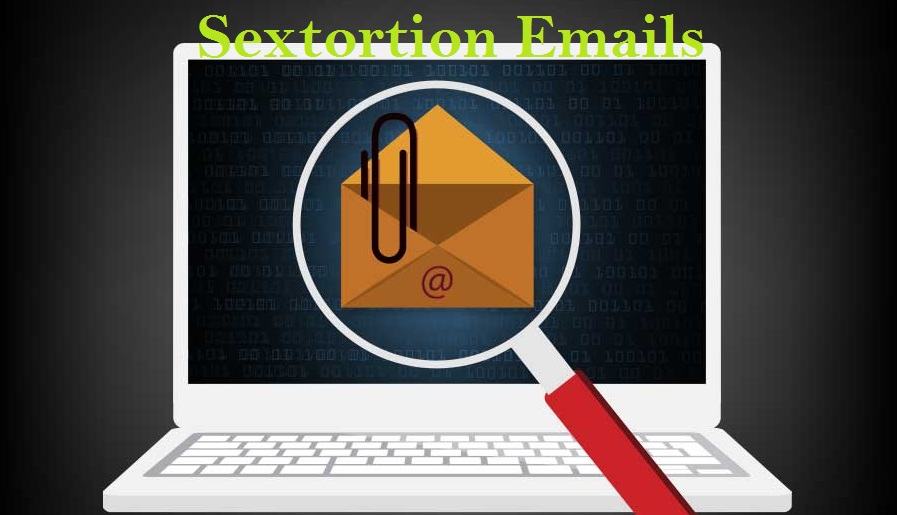
This type of email is a form of phishing known as a “sextortion scam.” It preys on individuals’ fears and attempts to blackmail them into paying a ransom. The scam email falsely claims that a cybercriminal has gained unauthorized access to the victim’s webcam and possesses a compromising video recording of them engaging in explicit activities.
The scammers leverage the potential embarrassment and shame associated with such content to coerce the victim into paying a ransom, often in the form of cryptocurrency, to prevent the release of the alleged video. However, it is crucial to understand that these claims are entirely false and fabricated.
What are some indicators or signs that can help identify a malicious email?
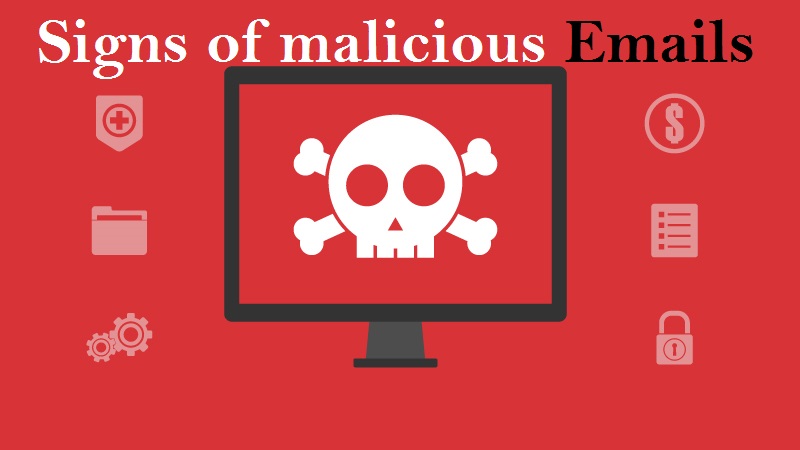
To spot a malicious email you can look for the following indicators:
Suspicious Sender: Check the sender’s email address and verify if it matches the official contact information of the organization or person they claim to represent. Be cautious of email addresses that contain misspellings, random numbers, or unfamiliar domain names.
- Poorly Written Content: Pay attention to grammar and spelling mistakes, unusual language, or poor formatting. Legitimate organizations usually maintain professional communication standards.
- Urgent or Threatening Language: Beware of emails that create a sense of urgency, pressure you to take immediate action, or threaten negative consequences if you don’t comply. Scammers often use fear or time-sensitive situations to manipulate victims.
- Suspicious Attachments or Links: Be careful of email attachments or links, especially from unknown or unexpected sources. Don’t open attachments or click on links unless you are confident about their legitimacy. Hover over links to see the actual URL before clicking.
- Requests for Personal Information: Legitimate organizations typically don’t request sensitive information, such as passwords, Social Security numbers, or credit card details, via email. Avoid providing personal data unless you are certain of the email’s authenticity.
- Unusual Requests or Offers: Be wary of emails offering unexpected rewards, prizes, or financial opportunities. If something seems too good to be true or doesn’t align with your normal interactions, it could be a sign of a scam.
- Suspicious Email Design: Poorly designed or visually inconsistent emails may indicate a scam. Watch for generic greetings, mismatched logos, or distorted images.
If you have doubts about an email’s legitimacy, it’s best to err on the side of caution. Avoid clicking on links or downloading attachments, and consider contacting the sender through a verified channel to verify the email’s authenticity.
What actions can be taken if you have fallen for an email scam?
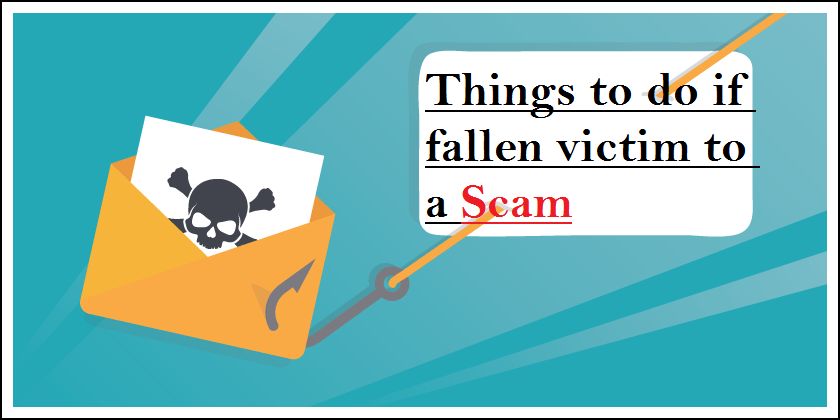
Below are the steps you should take if you’ve fallen prey to the Your REI Yeti Tumbler Giveaway Scam.
- If you have mistakenly provided your credit card information after clicking on a link in a phishing email, it is crucial to immediately contact your bank and inform them about the situation. It is highly likely that you will need to take steps to cancel the compromised credit card and request a replacement for enhanced security.
- If you have inadvertently provided your password after falling for an email scam, it is essential to promptly change your password. Typically, cybercriminals gather stolen login details and sell them to other malicious groups for potential exploitation. By changing your password immediately, you reduce the likelihood of criminals having sufficient time to cause harm or unauthorized access to your accounts and information.
- If you notice any indications of identity theft, it is important to promptly reach out to the Federal Trade Commission (FTC). The FTC will gather information about your situation and develop a personalized recovery strategy.
- Assist in safeguarding fellow internet users by reporting phishing emails to organizations such as the National Fraud Information Center, Anti-Phishing Working Group, FBI’s Internet Crime Complaint Center, and the U.S. Department of Justice.
- If you have inadvertently opened a malicious attachment, it is likely that your computer has been compromised. To address this, it is advised to conduct a thorough scan of your system using a reliable antivirus software. We suggest utilizing SpyHunter 5 for Windows to help mitigate any potential threats.
⇓⇓Download Spyhunter 5 Free Scanner⇓⇓
Do make sure to read SpyHunter’s EULA and Privacy Policy. Spyhunter free scanner downloaded just scans and detect present threats from computers and can remove them as well once, however it requires you to wait for next 48 hours. If you intend to remove detected threats instantly, then you will have to buy its licenses version that will activate the software fully.
Frequently Asked Questions
Why was I included in the distribution of this email?
Phishing emails are often disseminated by threat actors through extensive campaigns, leading to thousands of recipients receiving comparable messages.
If I have viewed a spam email but refrained from opening the attachment, is there a possibility that my computer has been infected with malware?
Simply opening or reading an email does not pose a direct risk of malware infection. The actual threat arises when you interact with malicious attachments or links contained within the email, triggering potential malware download or installation processes.
If I downloaded and opened a file from a spam email, does that mean my computer is infected?
If the file you opened from a spam email was an executable file (.exe, .run, etc.), there is a high chance that your computer may be infected. However, if the file was a document format (.doc, .xls, .one, .pdf, etc.), the risk of infection may be lower as these formats usually require additional actions to initiate the download or installation of malware, such as enabling macros or clicking on embedded content.
If I have unknowingly shared my personal information in response to a deceptive spam email, what steps should I take to mitigate the potential risks?
If you have mistakenly shared your login credentials, it is crucial to change the passwords for all affected accounts promptly. Additionally, if sensitive personal information like identification documents or credit card details were disclosed, it is important to promptly notify the relevant authorities or organizations responsible for handling such incidents.
Is SpyHunter 5 capable of detecting and eliminating malware infections that may be present in email attachments?
SpyHunter 5 is powerful security software that is specifically designed to scan devices and effectively remove various types of malware infections. With its comprehensive scanning capabilities, it can detect and eliminate most known malware threats, including those that may be present in email attachments and pop-up notifications. Running a thorough system scan is crucial to ensure that all potential threats are identified and removed from your device.


